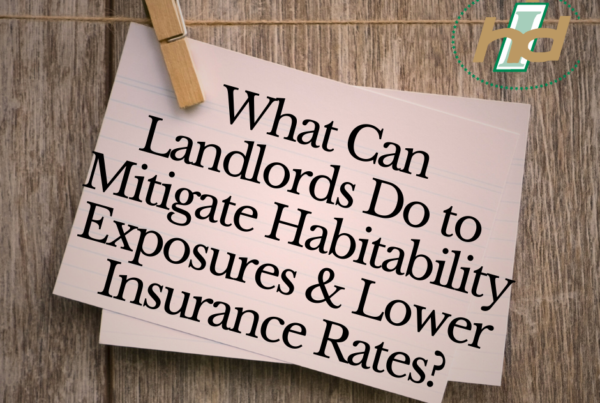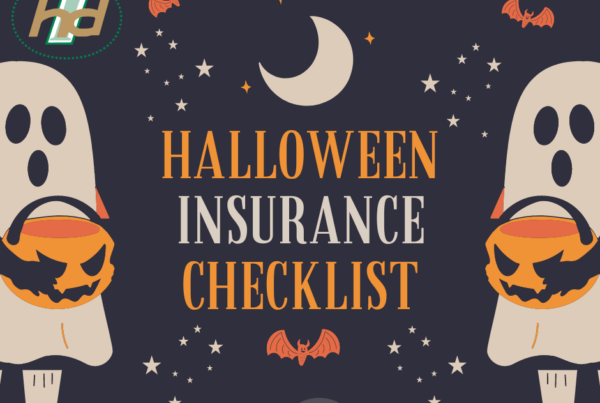
How to Protect Your Personal Belongings & Liability with the Right Insurance Coverage to Protect Your Assets
As a prudent part of your protection, as renter, there are certain kinds of insurance that you will want to obtain.
Often, renters just purchase the least expensive and most convenient coverage they can find. Yet, that can be like buying a car without brakes: You may be headed for a crash!
The following is a compilation of the most frequently purchased kinds of Renter’s insurance coverages along with a few tips along the way on how to improve the coverage for not all that much additional cost. And, with the exception of Flood and Earthquake Insurance, most of the coverage you need (or want) is purchased as a part of the renter’s contract, not requiring a separate policy.
The good news is that you don’t have to insure the structure; that’s up to your landlord. You do want to cover your personal belongings, however, in the event of a Fire or Theft a well as your exposure to liability cliams for injuries to others.
Coverage C
Contents coverage, provides protection for loss or damage to your personal belongings. The kinds of insurable damage that are covered are generally spelled out, what we call named causes of loss; these include Fire and Theft damage among other causes. While renters’ forms generally also provide for Replacement Cost of damaged personal property, some types of property’s claims value are limited to Actual Cash Value (rugs, for instance). Always refer to your contract or call your agent.
Other types of personal property are limited as to the maximum allowable limit of coverage – items such as Jewelry, Money, Gold, breakables, Computers, etc.). Please see the attached Protection Alert brief for a larger discussion.
Coverage D
This policy coverage provides for your economic loss following a fire; this protection is called Loss of Use (also called additional living expenses). This coverage is intended to provide you with funds to pay for temporary or longer term housing while your apartment or rented home is being repaired. It also covers the additional costs of living beyond basic shelter; for instance, in the first few weeks following a devastating fire, you’ll be eating out a lot and will not be preparing most of your own meals.
The amount of coverage for this varies, from insurer to insurer. It is often an additional limit of 10-20% of the contents (Coverage A) limit, but some companies make it an open number, referring to it as Actual Loss Sustained. An important aspect of this coverage is that it will run out after a 12-month period from the date of the fire. And, you may need to supplement the amount of coverage that is automatically granted under the renter’s form.
Coverage E
This part of the policy provides for your PersonalLiability coverage, to protect and defend you against Bodily Injury or Property Damage claims and lawsuits from another person, resulting from your personal activities and for which you are held responsible.
We strongly recommend a minimum of $500,000 personalliability protection. Often, more aggressive agents will offer $300,000 in coverage; they think it will make the difference in your buying their insurance, as it will appear less expensive. But, the additional cost to buy $500,000 is about the same as a fast-food meal for two. Knowing that, why wouldn’t you buy the extra protection?
Often, the personal liability protection will include Personal Injury coverage, but always ask to make it a part of the policy – just to be certain. Personal injury protects you in the event you are sued for slander or a bevy of other alleged infringements that do not involve actual bodily injury. In today’s suit-happy society, you need as much protection as possible.
Another thought about personal liability protection: People love animals, generally speaking. Most insurance companies will have a coverage exclusion if you have a breed of a dog (or a mixed breed) that is designated to be a potentially vicious breed. Generally speaking, these are pit bulls and mastiffs, but there are other breeds that may be excluded as noted in an insurance company’s contract or by a municipality’s designation. Be certain that you choose either an acceptable breed of dog or use an insurer that doesn’t have animal exclusions.
Tip: If you already have a dog (you are never going to give up) but it is unacceptable to your insurance company, there are programs popping up all the time which will accept generally prohibited breeds of dogs. There is a solution, so don’t drop your dog off at the local shelter; simply get an additional policy.
Coverage F
Medical Payments to Others. Severe bodily injury claims will be covered under the Personal Liability section of your policy. Medical Payments is intended to offer small payments for injuries (your guest twisted her ankle on your step) so as to avoid larger claims. So, you will see small coverage limits applied to this coverage section. Always contact your agent if someone is hurt on your property; the company will adjust the claim accordingly!
Like Homeowners’ policies, Renters’ policies have deductibles, and they are a good thing as they keep costs in check. We recommend minimally a $500 deductible as the best price point for most renter’s policies.
Depending upon where your property is located, there may be a requirement to join a Wind or Flood or Sinkhole pool (usually a Gulf or Eastern coastal coverage issue). The agents with whom you are working can direct you how to get to these pools if it is necessary.
And remember, Earthquake & Flood insurance are extra and not a part of a regular property insurance policy. This is definitely a California (and Pacific states) issue!
But Wait, There’s More!
Umbrella (aka: Excess) Liability Insurance
An Umbrella Liability policy provides you with protection in addition to what we call your primary limits of coverage: It is a policy of additional insurance, generally written in increments of $1,000,000, in addition to your auto, home or renter’s, and landlord insurance policies. The idea here is that rather than a claimant trying to put his hands in your pockets, you want him instead to go after the insurance company’s pocket!
What Does an Umbrella Liability Policy Cover?
This total coverage limit provides you with protection for severe claims for which you may become liable due to bodily injury or property damages to others and which are first covered under your primary limits (your first “layer”) of coverage. Basically, the Umbrella Policy kicks in when a claim exceeds this first layer of protection; it creates an additional layer of protection for claims that exceed those initial policy limits, including the cost of defense that ends when your initial policy’s limits are fully spent.
It is important to ensure that you do not have a gap in your layers of coverage. You must be sure that the limits of the primary policy (the first layer) end where the Umbrella Policy’s layer begins, without a gap in the middle. You want to have your auto, home, and rental insurance liability limits be high enough to flow directly into the umbrella’s layer of coverage.
Tip: Make sure all entities (you and any spouse, trust, or LLC) are listed on your primary and umbrella policies. Not all insurers will do this, and the coverage is not automatic. You must request this additional protection.
It is vital to remember that the Umbrella (Excess) Policy is basically an extension of your home, rental, and auto policies. Generally, Umbrella Policies will not cover actions outside of what the primary policy will cover. Other policy options may be available when such a protection requirement arises.
What Do You Need to Do to Get an Excess Liability Policy?
You generally need primary limits on your auto policies of at least $250,000 per person/$500,000 per occurrence Bodily Injury, $100,000 Property Damage, and $300,000 on your home and rentals before you look to an Umbrella Policy. Then, ask your insurance agent to quote the coverage for you: It is just that simple!
What Does an Umbrella (Excess) Liability Policy Cost?
You have 1 Residence and 2 Cars: The cost can be as low as $290 annually for an Umbrella Liability policy. This cost can be reduced even more if you package your Home, Auto, and Umbrella insurance with one company.
Seldom will two Umbrella policies be the same. Therefore, this discussion of Umbrella insurance is necessarily brief and is not to be interpreted as the final word about Umbrella liability protection; please refer to your policy for complete coverage explanations and always ask questions of your insurance agent to ensure proper protection.
Protection Alert!
Whenever you purchase a Renter’s insurance policy, you need to be aware that certain types of property are restricted in each and every insurance policy sold in America. We also have written about this in our newsletters & blogs!
Here are a few interesting tips you need to know about some of the limitations to the coverage in a Renter’s policy.
- You may wish to enhance your policies by adjusting the sub-limits in your policies for the following items: Jewelry & Furs, Bullion (gold, silver, pewter), Money(including coins and coin collections), Stamp collections,Guns, Securities,and in some cases, Computers, Tools, Oriental Rugs, andBusiness Property(your employer’s or your own).
- Each of these items noted have coverage limitations, ranging from $1,500 – $3,000 (possibly a little more – it varies by company), above which the insurance company will not reimburse you for your loss unless you have adjusted your policy to accommodate for these sub-limits. This can be done either by increasing this sub-limit or by specifically itemizing certain property on your policy and paying an additional premium for it. Often, the combination approach (increasing the sub-limit and itemizing certain pieces) is the best means of properly protecting your valuables.
- Do you operate an additional business, an In-Home Business, from a spare bedroom? You say “No”? According to federal income tax statistics, nearly 10% of all tax-paying Americans have an In-home business operation.
If you are part of that 10%, we can provide Liability & Propertycoverage for your in-home business; it is done as a rider to your homeowner’s policy or occasionally by a separate policy. You are a part of that 10% if you happen to regularly sell anything out of your home or garage
In most cases, an In-Home Business Policy is less expensive than a standard Business Insurance policy, and it fills in some of the gaps of your Renter’s insurance policy. What gaps? Your Renter’s Policy will not protect a business for property or liability loss that is being operated from home; nor will it protect you unless the policy has been endorsed for the business exposure.
- Earthquake, Flood, and Landslide insurance are additional items, not covered under a Renter’s policy. Protection for these disasters may be purchased with the policy or separately.
- Renter’s policies typically do not extend liability protection to the use of mopeds, motorized scooters, go-karts, motorized toy cars (Barbie cars), motorboats, or jet skis. This includes rentals.
The excluded & limited items in a policy are not be limited to this list, but these are many of the common types of property limited or excluded. Please call us to discuss your policy if you believe you need some “special attention” to your needs. Or, go online to the MyFreeProtectionReport.com link to see what additional protection you may want or need to discuss.
The cost to adjust your policy, to properly insure these limited coverage items, is not expensive compared to the sizable losses you are self-insuring by not properly covering them under your policies.
If you want to replace these valuable personal items in the event of a theft or other covered loss, and if you want liability insurance to provide additional protection for in-home business activities, you must investigate these additional coverages.
Call us today to review these and other items that may be pertinent to your individual insurance plans.




